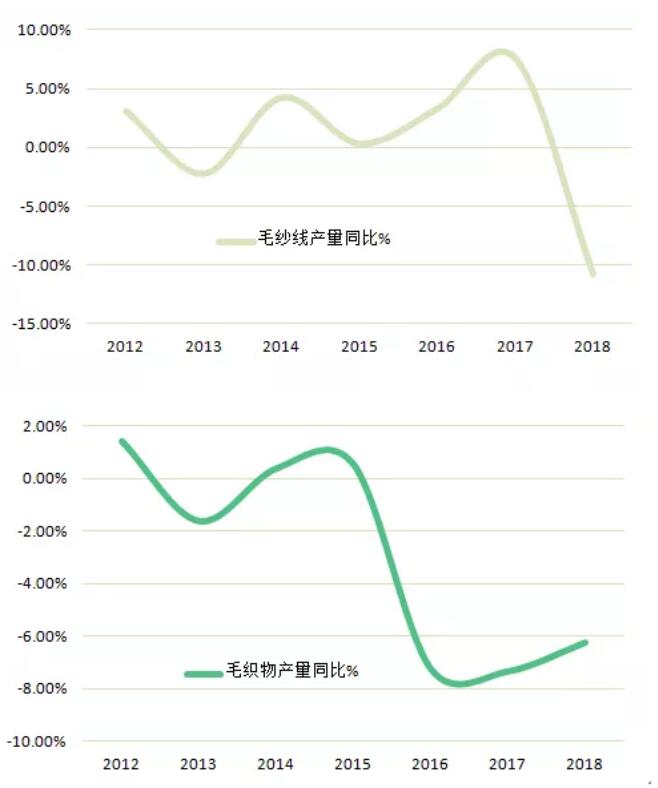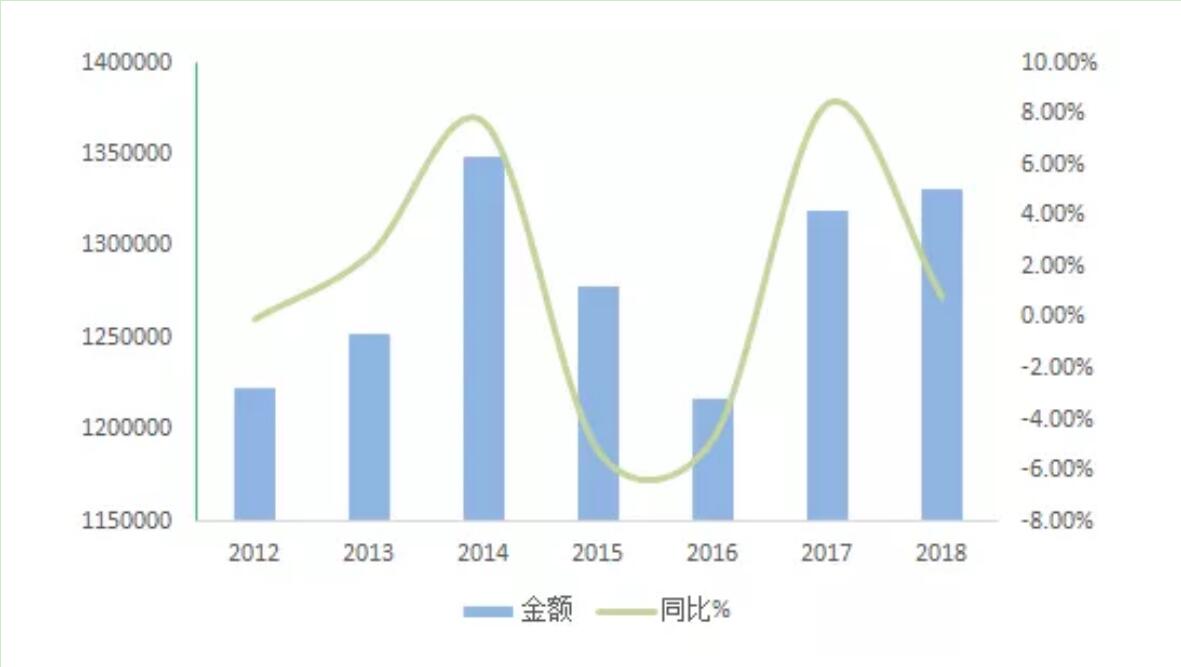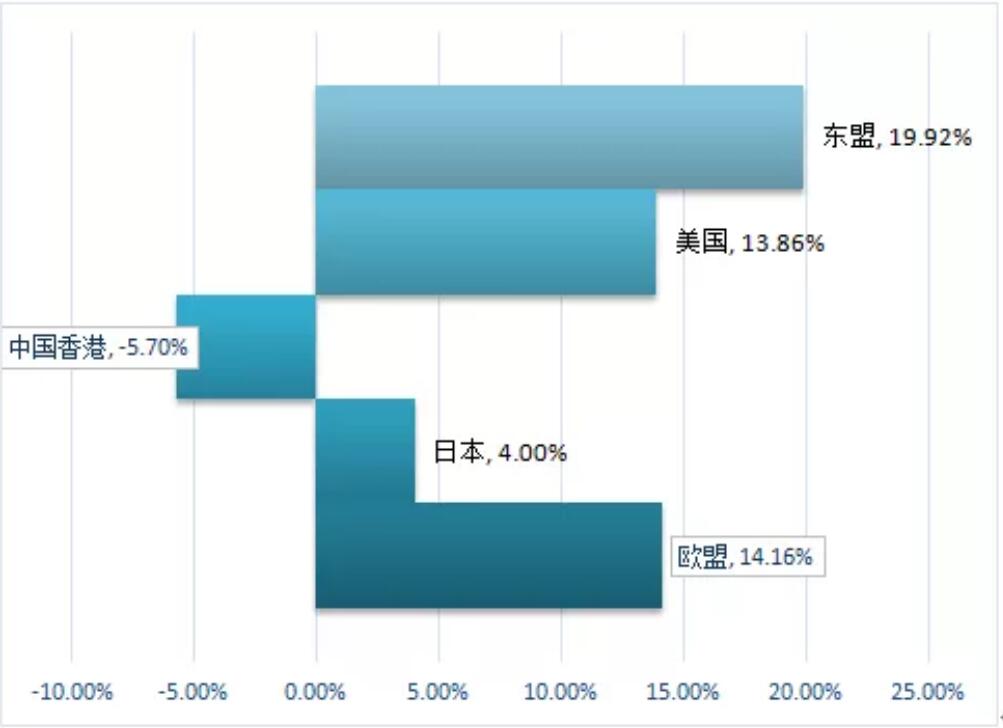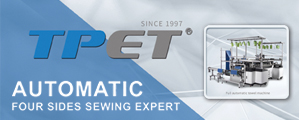The annual report on the operation of the wool textile industry in 2018
Apr 04, 2019 | by Flora
In 2018, the overall operation of the wool textile industry showed an adjustment and transformation trend. The output of major products declined, and the products with large export volume showed a decline too. The demand for market transformation and upgrading was urgent. Plus the high raw material prices in the previous three quarters, the burden on enterprises has been further aggravated, and the polarization of the industry has become more apparent.
Production
In 2018, the products produced by wool textile enterprises above designated size mainly fell, among which: wool yarn production fell by 10.78% year on year while wool fabric production decreased by 6.24% year on year.

Fig. 1 Production growth rate of major woolen products in 2012 - 2018 (unit: %)
Source: National Bureau of Statistics
Exports & imports
According to China Customs statistics, in 2018, China’s total import and export of wool raw materials and products was 18.31 billion U.S. dollars, an increase of 4.5% year on year.
Among them, the total export value was 13.32 billion U.S. dollars, a year-on-year increase of 0.8%, and the total import value was 5 billion U.S. dollars, an increase of 15.9% year on year.
Exports
In 2018, the specific export situation of wool raw materials and products presented some changes compared with the recent years. The export intermediate products, including wool tops, dehaired wool, wool yarns and wool fabrics, saw increasing in volume and price after the dropping for several consecutive years, growing by 4.4%, 4.8%, 11.3% and 3.6% respectively. The woolen garment products ended a good export momentum, showing a rapid decline, and the export volume of knitted garments and woven garments fell by 7.6% and 36% respectively. The export situation of blankets also performed poorly in 2018, and the export volume fell by 3.3% year on year. However, the export of artificial fur remained strong and maintained rapid growth, up 23.6% year on year.

Fig. 2 The total and Y/Y value of wool textile exports in 2018
Source: China Customs
Exports to the U.S., Europe, Japan, ASEAN and China Hong Kong still account for 70% of total wool textile exports. Except for a slight decline in exports to China Hong Kong, the export volume to other export markets has increased. The amount of exports to the United States, the European Union, Japan, and ASEAN increased by 13.9%, 14.2%, 3.9%, and 19.9%, respectively.

Fig. 3 Growth of major export markets for wool textile products in 2018
Source: China Customs
Imports
In 2018, China imported a total of 377,000 tons of wool, an increase of 7.2% year on year. The total import value was 3.28 billion U.S. dollars, an increase of 17.12%. Both volume and value of wool imports increased, continuing the rapid growth since 2017.
Imported wool from Australia, New Zealand, South Africa, Uruguay, and Argentina still accounted for 70% of total wool imports, accounting for more than 50% of total wool processing. In 2018, the largest share of Australian wool imports presented a downward trend, down 8% year on year, while imports from other major wool importing countries increased year on year. The unit prices of wool imports in all countries showed an increase in the previous year, which led to a rapid increase in the amount of imports.
The operation of wool textile industry
According to the National Bureau of Statistics, the main business income of wool textile enterprises above designated size increased by 1.44% year on year in 2018, which was lower than the growth rate of main business cost of 1.97% over the same period. Total profit fell by 10.9% year on year, and the industry average profit margin was 3.7%, down 0.5 percentage point from the previous year. The loss of loss-making enterprises rose by 19.5% year on year. The overall difficulties faced by the industry increased compared with the previous year. The profitability was insufficient and the pressure on enterprises was relatively high.
In 2019, the wool textile industry will face complex and ever-changing internal and external markets and situations. The industry operation in the in-depth adjustment period faces many challenges. This year will also be a crucial year for deepening the supply-side structural reform and implementing the Textile Industry Development Plan (2016 - 2020). Actively exploring the transition to sustainability, technology and fashion will be a common issue for the industry. Promoting the healthy development of the industry, advancing the upgrading of industrial clusters, and strengthening talent education and training will be an important direction for industry transformation and upgrading.








